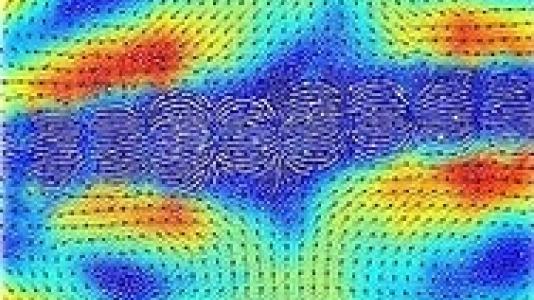
ARGONNE, Ill. — “Magnetic snakes” with unique dynamic and magnetic properties that may usher in new generations of recording media, conductors and microfluidic devices have been created by researchers at the U.S. Department of Energy’s Argonne National Laboratory.
The undulating, snake-like patterns are created when magnetic micro-particles floating on water are exposed to an alternating magnetic field. These magnetic “snakes” are spontaneously created from short chains of magnetic micro-particles as a result of the competition between magnetic and hydrodynamic forces. Their internal structure and magnetic ordering can be effectively tailored by adjusting the external magnetic field.
The birth and existence of the “snake” is driven by pattern-induced waves on the water surface, said Alexey Snezhko, who developed the process along with Igor Aronson, Maxim Belkin and Wai-Kwong Kwok, all from Argonne’s Materials Science Division. Strong induced vortex flows on the surface of water complete the rich hydrodynamic picture of the self-assembled magnetic snake.
“The self-assembled materials that automatically arrange themselves into useful patterns in a controlled electric and magnetic field environment have tremendous potential as components in micro- and nano-scale devices,” Snezhko said.
The magnetic self-assembly phenomena may be used to make the next generation of magnetic recording media or transparent conductors based on self-assembled conducting networks of magnetic micro-particles. Magnetic snakes may also lead to new micro-fluidic devices for bioanalysis in which an alternating magnetic field can be used to assist transportation of micro-particles through micro-channels in biochips.
A paper on the research has been accepted for publication by Physical Review Letters (2007). The research was funded by the U.S. Department of Energy’s Office of Basic Energy Sciences.